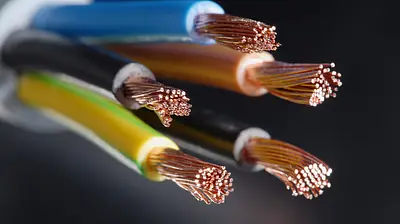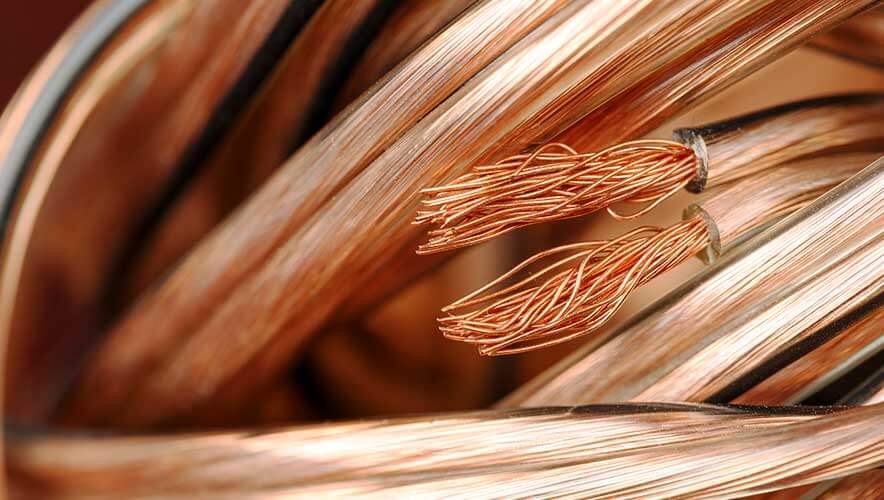Views: 0 Author: Rachel Wynn Publish Time: 2025-05-14 Origin: Site











Copper wire is widely used in electrical, electronic, and telecommunications industries due to its excellent conductivity and malleability. As a key metal resource, copper wire is also commonly recycled. The value of copper wire, however, varies significantly depending on factors such as the type of copper wire (bare or insulated), its condition, and the prevailing market conditions. This article explores the value of copper wire from several angles, including the price of unstripped copper wire, scrap copper wire, and more.
Unstripped copper wire refers to cables that are still covered in their insulating material. Since additional processing (such as stripping the insulation) is required before the copper can be reused, the market price for unstripped copper wire tends to be lower compared to stripped copper wire.
Copper Purity: The higher the copper content, the higher the price.
Wire Type: Different types of copper wire (e.g., power cables, communication cables) may have different market values.
Market Demand: The price of copper fluctuates based on demand from industries like construction, electrical utilities, and telecommunications.
| Wire Type | Market Price Range (Per Kg) |
|---|---|
| Unstripped Copper Wire | $2.5 - $4.5 |
| Stripped Copper Wire | $5.5 - $7.5 |
Scrap copper wire refers to used or discarded copper wire, often removed from old equipment or buildings. While scrap copper wire generally has a lower value than unstripped wire, its price can increase if it has been cleaned or sorted before recycling.

Scrap copper wire can be categorized based on its condition and purity:
Clean Scrap Copper: This type of scrap wire is relatively free of insulation and impurities, making it more valuable.
Dirty Copper Wire: This type still contains a significant amount of insulation or other contaminants, requiring additional cleaning before recycling.
Mixed Scrap Copper: This includes copper wire mixed with other metals or materials, often leading to lower purity and a reduced recycling price.
| Scrap Type | Market Price Range (Per Kg) |
|---|---|
| Clean Copper Wire | $3.0 - $5.0 |
| Dirty Copper Wire | $1.0 - $2.0 |
| Mixed Copper Wire | $1.5 - $3.0 |
The price of copper is influenced by various factors, including global economic conditions, supply and demand, and political events. Copper wire prices are directly tied to fluctuations in the price of copper itself.
Several key factors impact copper prices:
Global Economic Conditions: In periods of strong economic growth, the demand for copper increases, pushing prices up. Conversely, economic downturns may lead to a decline in copper prices.
Supply and Demand: Copper is extracted from mines or recycled. Any disruption in mining supply or an increase in demand can cause price fluctuations.
Energy Prices: Copper mining and refining are energy-intensive processes. Rising energy costs can lead to higher production costs, which in turn can raise the price of copper.

The value of copper wire during recycling is not only influenced by market prices but also by the quality and preparation of the wire. Here are a few tips to maximize its recycling value:
Stripping the Insulation: Removing the insulating material from copper wire increases its purity and therefore its value. A simple wire stripper tool can help achieve this.
Sorting the Wire: Different types of scrap copper wire should be separated to maintain higher purity. Sorting helps reduce contaminants and increases the price when recycling.
Maintaining the Wire: Avoiding damage or oxidation of copper wire during use can help preserve its value when recycling. Keeping wires in good condition is essential for maximizing their return.
The value of copper wire can vary greatly depending on its type, condition, and current market prices. Whether you’re dealing with unstripped copper wire, scrap copper wire, or other forms of copper, understanding how to maximize the value through proper handling and processing can make a big difference in the returns you receive. Keep an eye on market trends, ensure proper wire maintenance, and take advantage of copper recycling opportunities to get the best value for your copper wire.






